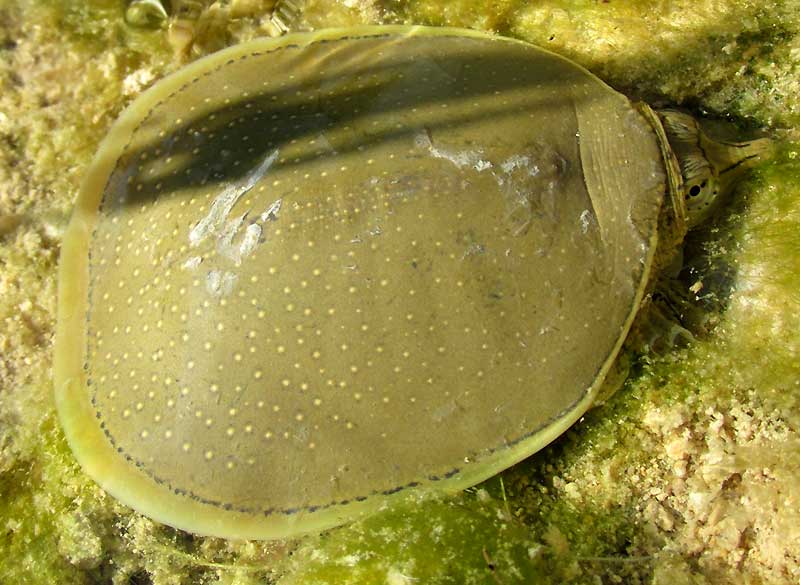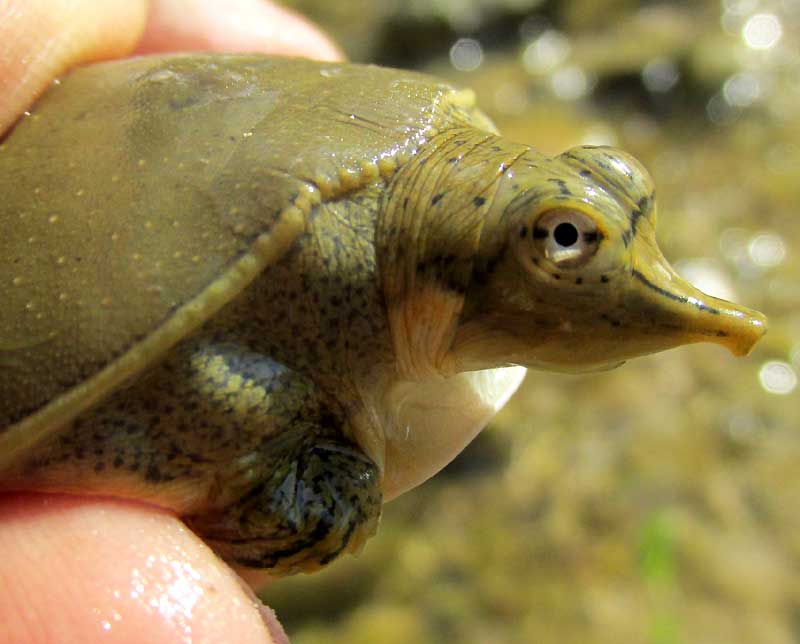Excerpts from Jim Conrad's
Naturalist Newsletter

from the August 30, 2020 Newsletter issued from the valley of the Dry Frio River in northern Uvalde County, southwestern Texas, on the southern border of the Edwards Plateau; elevation ~1750m (~5750 ft); N29.62°, W99.86°; USA
SPINY SOFTSHELL TURTLE
The little Dry Frio River is very low. In a spot where it had narrowed so I could step over it, and was about to disappear in mud and gravel, at the water's edge the little turtle shown above sat looking up at me, not moving a muscle. It was so easy to simply pick him up that I thought he might be sick or injured, but the moment he realized he was captured, he stuck his head and feet out and squirmed so mightily that I let him go. Below, you can see his head close-up.

With such a tubular snout and soft-looking shell, he had to be a softshell turtle. Texas has two softshell species, and this appears to be the more common one, the Spiny Softshell, APALONE SPINIFERA, though they look a lot alike. Mainly I'm going by the low, toothlike items along the top shell's front edge, right above the neck.
Four subspecies of the Spiny Softshell are recognized in Texas. According to distribution maps, this must be Apalone spinifera guadalupensis.
Spiny Softshells are kown to inhabit rivers, lakes, oxbows, bayous and manmade lakes with muddy or soft bottoms. It's diurnal, feeding mainly on insects, fish and crayfish. The pool in which I saw this one was home to numerous small fish, and the stream disappeared among reeds bulrushes that must have been home to insects